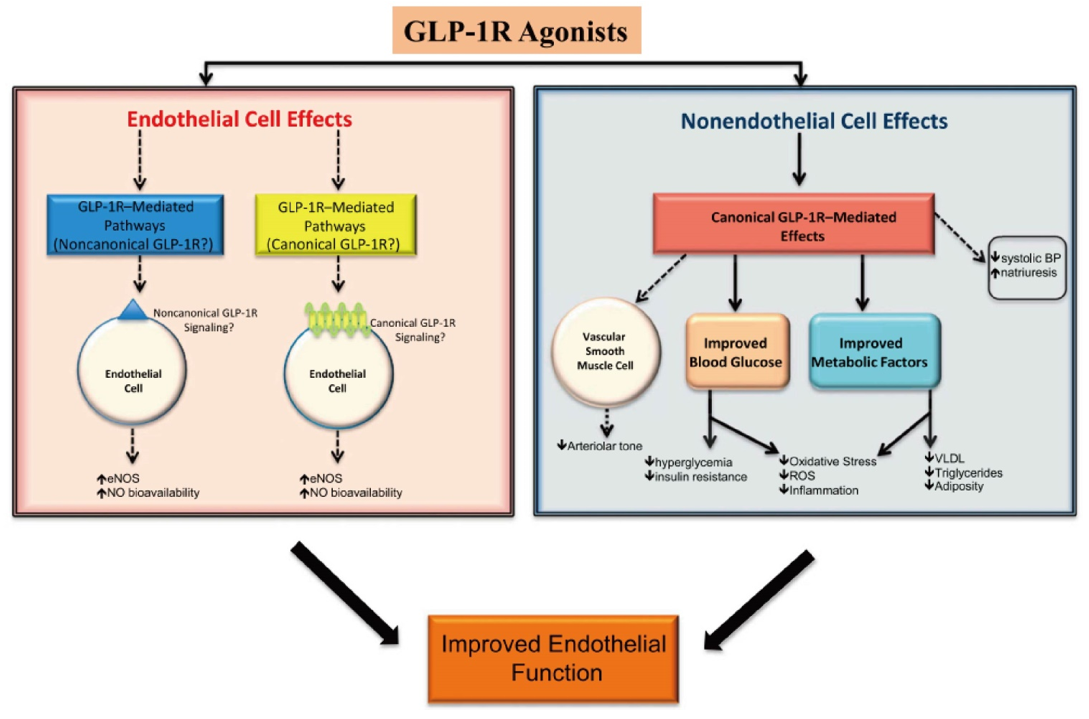
Our promise to you:
Guaranteed product quality, expert customer support.
 24x7 CUSTOMER SERVICE
24x7 CUSTOMER SERVICE
 CONTACT US TO ORDER
CONTACT US TO ORDER
GLP1R Gene Editing 
Glucagon-like peptide 1 (GLP-1) is a peptide hormone that is synthesized in the small intestine in response to nutrient ingestion. GLP-1 binds to the GLP-1 receptor (GLP-1R), which is expressed on islet β-cells and belongs to the G protein-coupled receptor family. Activation of the GLP-1R stimulates adenylate cyclase and enhances the production of cAMP, the primary effector of GLP-1-induced insulin secretion. Besides, increased levels of cAMP activate PKA or cAMP-regulated guanine nucleotide exchange factor II (Epac2), and contribute to mediating multiple physiological actions including insulin secretion. The GLP-1R is expressed in pancreatic β-cells and various extrapancreatic tissues including the brain, heart, gut, lung, and kidney. Considering that evidence indicating that cAMP and PKA pathways link to antioxidative effects, it is likely that GLP-1 protects various tissues from oxidative injury.
GLP-1R agonists for the treatment of type 2 diabetes
Currently, modulating GLP-1R activity is used in the treatment of type 2 diabetes. The GLP-1R agonists target a broad spectrum of the multifaceted pathophysiology of T2D. Therefore, they improve glucose homeostasis without risk of hypoglycaemia, facilitate body weight loss, and have potential benefits for cardiovascular parameters. Naturally, the introduction of the GLP-1R agonists has aroused substantial clinical interest.
Administration of GLP-1 analogues (such as exenatide and liraglutide) to type 2 diabetic patients improves glycemic control by augmenting insulin secretion and dampening glucagon secretion, as well as delaying gastric emptying. Exenatide and liraglutide mimic endogenous GLP-1 activity through binding to GLP-1R on various tissues, but these analogues are resistant to degradation. GLP-1 has a half-life of 1-2 min, whereas exenatide has a half-life of 3.4-4 h and liraglutide's half-life is 11-13 h. Thus, these GLP-1 analogues greatly prolong the GLP-1 response promoting normoglycemia in type 2 diabetic patients during fasting and after nutrient ingestion. Recently, one study has found that GLP-1R expression is decreased in the hypothalamus of type 2 diabetic patients in comparison to healthy controls, indicating that the reduced ability of GLP-1 to induce satiety may contribute to the dysfunctional feeding behaviors and metabolic homeostasis observed in these patients.
Endothelial dysfunction is a unifying pathobiological process that links diabetic macrovascular and microvascular complications. Koska et al. demonstrate that exenatide exerts a protective endothelial function effect in the postprandial period following short-term therapy in patients with type 2 diabetes (diabetes duration >5 years). Thus, novel physiological insights derived from these elegant experiments supporting the presence of direct vascular effects with GLP-1R agonists may ultimately help to better interpret the pending results of large cardiovascular and microvascular outcome studies using these agents.
 Figure 1. GLP-1R agonists and endothelial function. (Lovshin J, Cherney D. 2015)
Figure 1. GLP-1R agonists and endothelial function. (Lovshin J, Cherney D. 2015)
GLP1R Gene Editing Service
CRISPR/Cas9 PlatformCB at Creative Biogene is dedicated to offering comprehensive CRISPR/Cas9 gene editing services and products for academic research, biotech research and pharmaceutical drug discovery. With deep gene editing knowledge and extensive experience in experimental operation and data processing, we help you effectively control GLP1R genes knockout/knockin/point mutation in cells or animals via CRISPR/Cas9 technology.
| Service | Details | Alternative cell lines or animal species |
| GLP1R Gene Editing Cell Line Generation | gRNA design and synthesis Transfect the cell lines you're interested Select the high expression cells and sort monoclonal cell Validate the knockout/knockin/point mutation of GLP1R by PCR and sequencing Provide cryogenic preserved vials of stable cells and final reports | HEK239T, Hela, HepG2, U87, Ba/F3, CHO, MDA-MB-453, MDA-MB-231NIH3T3, T47D, Neuro2a, MCF7, RKO, K562, RAW264.7, etc. |
| GLP1R Gene Editing Animal Model Generation | GLP1R gene conventional knockout animals GLP1R gene conditional knockout animals GLP1R point mutation animals GLP1R knockin animals | Mouse, rat, rabbit, zebrafish, C. elegans, etc. |
Related Products at CRISPR/Cas9 PlatformCB
| CATALOG NO. | PRODUCT NAME | PRODUCT TYPE | INQUIRY |
| CDKM-0921 | B6J-Glp1rem1Cflox | Knockout Mouse | Inquiry |
References
- Lund A, et al. Glucagon-like peptide-1 receptor agonists for the treatment of type 2 diabetes: differences and similarities. European journal of internal medicine, 2014, 25(5): 407-414.
- Lovshin J, Cherney D. GLP-1R agonists and endothelial dysfunction: more than just glucose lowering?. Diabetes, 2015, 64(7): 2319-2321.
- Fujita H, et al. The protective roles of GLP-1R signaling in diabetic nephropathy: possible mechanism and therapeutic potential. Kidney international, 2014, 85(3): 579-589.
- Simó R, Hernández C. GLP-1R as a target for the treatment of diabetic retinopathy: friend or foe?. Diabetes, 2017, 66(6): 1453-1460.
- Reed J, Kanamarlapudi V. GLP-1R. Encyclopedia of signaling molecules. New York, NY: Springer, 2016: 1-12.